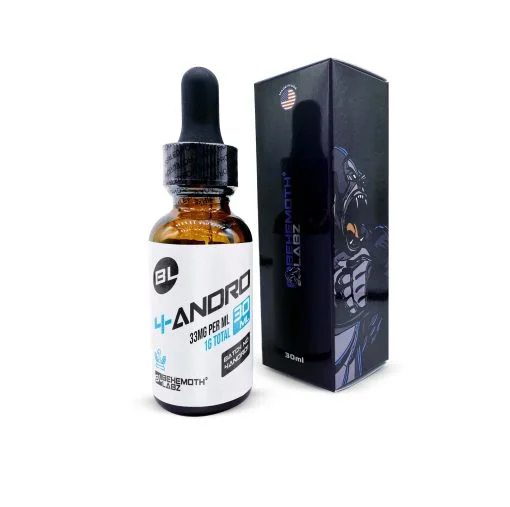Peptides
Ipamorelin Peptide: Benefits, Side Effects, and More
Among all Growth Hormone-Releasing Peptides (GHRP), Ipamorelin is at the top of the list for its potential benefits in supporting structural development, skeletal integrity, and metabolic activity in research subjects.
These potential impacts are achieved without causing severe side effects. But the question that arises here is, how does it work? How are these benefits achieved? Are there any side effects associated with Ipamorelin?
To answer these questions, keep reading this blog till the end!
What is Ipamorelin?
Ipamorelin is a pentapeptide, consisting of 5 amino acid molecules connected by peptide bonds. It belongs to the category of Growth hormone-releasing peptide (GHRP). The GHRPs are those peptides that have the potential to directly or indirectly stimulate the production of growth hormones from the pituitary gland. Ipamorelin is one of them.
By potentially performing the role of a GHRP (Growth Hormone Releasing Peptide), Ipamorelin may influence the pituitary gland within the central endocrine system of research subjects. This interaction may stimulate the release of growth hormones, which are known to play a significant role throughout the lifecycle of biological test models.
How Does Ipamorelin Work?
The working mechanism of Ipamorelin is similar to that of other GHRPs. This means that it may bind with receptors in the pituitary glands of the central endocrine system of subjects and thus stimulate them. This stimulation enhances the production of Growth Hormone (GH) in subjects. Growth hormones (GHs) are associated with supporting structural development, skeletal integrity, mineralization processes, metabolic activity, and the overall physiological composition of test subjects.
Potential Benefits of Ipamorelin
The potential benefits of Ipamorelin on research subjects are as follows:
1. Skeletal tissue development in Research Subjects
The foremost benefit of Ipamorelin is its potential to support cellular and structural development in research subjects. This effect may be achieved when Ipamorelin potentially enhances the secretion of growth hormones. In return, the growth hormones may influence the accumulation of structural proteins or help mitigate catabolic activity in test subjects.
2. Metabolic Output and Endurance Capacity
Another effect of Ipamorelin peptide is its potential influence on overall metabolic output and endurance-related parameters in research subjects. These effects may occur through various indirect mechanisms. For instance, Ipamorelin may enhance growth hormone levels, which in turn may support recovery processes and promote the accumulation of structural compounds, along with a possible increase in metabolic activity.
The increase in metabolic activity may support greater resource availability, while enhanced recovery dynamics and structural support may contribute to improved output capacity in test subjects.
3. Skeletal Structure Support
Support of skeletal structure is another observed effect of Ipamorelin in research subjects. To achieve this effect, Ipamorelin may function as a growth hormone-releasing peptide and stimulate the pituitary axis to increase the release of growth hormone.
Growth hormone, in turn, may influence osteoblast-like cell activity, mineral retention, and collagen synthesis. These processes are associated with maintaining skeletal integrity in test models.
4. Metabolic Activity
An increased metabolic activity in test subjects may be observed through multiple mechanisms. For instance, the increase in structural protein content is theorized to demand higher energy utilization, thereby influencing the metabolic activity of the subjects. Additionally, the production of growth hormones may play a role in regulating glucose metabolism, further affecting metabolic processes in research models.
Legality of Ipamorelin
The use of Ipamorelin for human consumption is illegal, as neither the FDA nor the WADA has approved it. However, it can be used for research and laboratory purposes only.
Is Ipamorelin Safe to Use?
Yes, according to various studies conducted on test subjects, Ipamorelin is safe to use. However, researchers are required to follow the guidelines and recommended dosage based on research goals and objectives. In case of the appearance of any mild side effects, researchers are advised to consult a healthcare professional.
Potential Side Effects of Ipamorelin
Although Ipamorelin has proven beneficial to research subjects, it may cause several side effects. Here are the commonly occurring side effects of Ipamorelin in research subjects:
- Headaches
- Fatigue
- Dizziness
- Injection site reaction
- Nausea
- Increased appetite
- Water retention
Conclusion
To conclude, Ipamorelin is a growth hormone-releasing peptide with a proven track record of beneficial impacts in test participants. These effects may include support for structural development, skeletal integrity, and enhanced metabolic activity in test subjects. Researchers are advised to adhere to the best practices outlined above and follow the recommended dosage to achieve these outcomes. It is also important for researchers to be aware of any potential effects Ipamorelin may have on the test subjects.
FAQs
What is the best place to buy Ipamorelin online?
The best place to buy Ipamorelin online is BehemothLabz. It is the place where quality meets excellence. A third-party source verifies our products, and they are ready to display optimal results in research settings. Other than that, our product prices are competitive despite uncompromised quality. Our products can be delivered nationally and internationally with a secure payment method.
Is Ipamorelin a steroid?
No, Ipamorelin is not a steroid. It is a Growth Hormone-Releasing-Peptide (GHRP).
What does Ipamorelin do in research subjects?
Ipamorelin is known for its potential increase in the levels of growth hormones in test subjects. This growth hormone is involved in several biological processes, including structural protein synthesis, bone integrity, and skeletal support, among other functions in research subjects.











